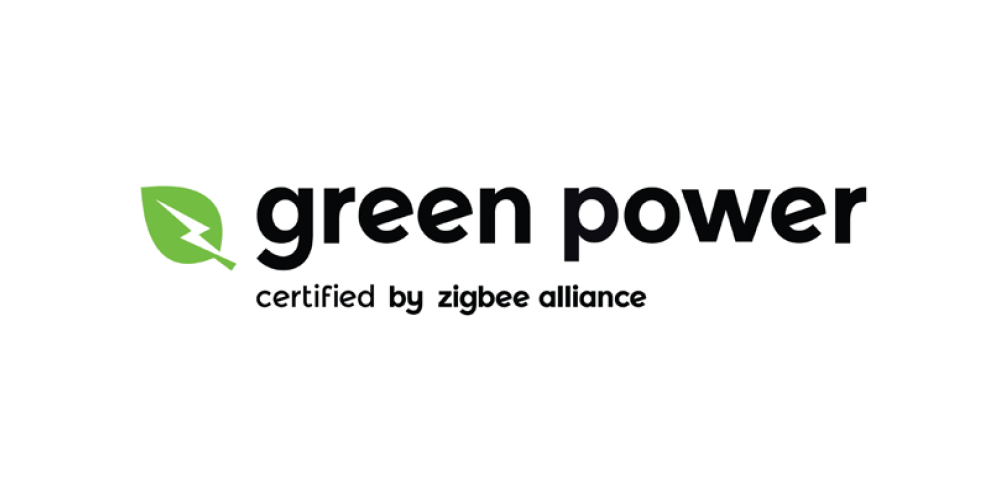Green Power is a lower Power solution from the ZigBee Alliance. The specification is contained in the ZigBee3.0 standard specification and is ideal for devices that require battery-free or very low Power usage.
A basic GreenPower network consists of the following three device types:
- Green Power Device(GPD)
- A Z3 Proxy or GreenPower Proxy (GPP)
- A Green Power Sink(GPS)
What are they? See following:
- GPD: low-power devices that collect information (e.g. light switches) and send GreenPower data frames;
- GPP: A GreenPower proxy device that supports both ZigBee3.0 standard network functions and GreenPower data frames to forward GreenPower data from GPD devices to target devices, such as routing devices in ZigBee3.0 networks;
- GPS: A Green Power receiver (such as a lamp) capable of receiving, processing and transmitting all Green Power data, as well as zigBee-standard networking capabilities.
Green Power data frames, shorter than the usual ZigBee Pro data frames, ZigBee3.0 networks allow Green Power data frames to be transmitted wirelessly for a shorter duration and therefore consume less energy.
The following figure shows the comparison between standard ZigBee frames and Green Power frames. In actual applications, the Green Power Payload has a smaller amount of data, mainly carrying information such as switches or alarms.
Figure 1 Standard ZigBee Frames
Figure 2, Green Power Frames
Green Power Interaction Principle
Before GPS and GPD can be used in a ZigBee network, THE GPS (receiving device) and GPD must be paired, and a GPS (receiving device) in the network must be informed which Green Power data frames will be received by the GPD. Each GPD can be paired with one or more GPS, and each GPS can be paired with one or more GPD. Once pairing debugging is complete, GPP (proxy) stores pairing information in its proxy table and GPS stores pairing in its receive table.
GPS and GPP devices join the same ZigBee network

The GPS device sends a ZCL message to listen for the GPD device joining and tells the GPP to forward it if any GPD joins

The GPD sends a join Commissioning Message, which is captured by the GPP listener and also by the GPS device

GPP stores GPD and GPS pairing information in its proxy table

When the GPP receives data from the GPD, the GPP sends the same data to the GPS so that the GPD can forward the data to the GPS through the GPP

Typical Applications of Green Power
1. Use your own energy
The switch can be used as a sensor to report which button was pressed, greatly simplifying the switch and making it more flexible to use. Kinetic energy based switch sensors can be integrated with many products, such as lighting switches, doors and Windows and door handles, drawers and more.
They are powered by the user’s daily hand movements of pressing buttons, opening doors and Windows, or turning handles, and remain effective throughout the life of the product. These sensors can automatically control lights, exhaust air or warn of unexpected situations, such as intruders or window handles that open unexpectedly. Such applications for user-operated mechanisms are endless.
2. Industrial Connections
In industrial applications where machine assembly lines are heavily used, continuous vibration and operation make wiring difficult and expensive. It is important to be able to install wireless buttons in locations that are convenient for machine operators, especially where safety is concerned. An electric switch, which can be placed anywhere and requires no wires or even batteries, is ideal.
3. Intelligent Circuit Breaker
There are many limitations in circuit breakers’ appearance specifications. Intelligent circuit breakers using AC power are often unable to be realized because of limited space. Intelligent circuit breakers that capture energy from the current flowing through them can be isolated from the circuit breaker function, reducing space footprint and lower manufacturing costs. Smart circuit breakers monitor energy consumption and detect abnormal conditions that could cause equipment failure.
4. Assisted Independent Living
A big advantage of smart homes, especially for older people who need multiple sources of care in their daily lives. These devices, especially specialized sensors, can bring much convenience to the elderly and their caregivers. The sensors can be placed on a mattress, on the floor or worn directly on the body. With them, people can stay in their homes for 5-10 years longer.
The data is connected to the cloud and analyzed to alert caregivers when certain patterns and conditions occur. Absolute reliability and no need to replace batteries are areas of this kind of application.
Post time: Oct-12-2021


